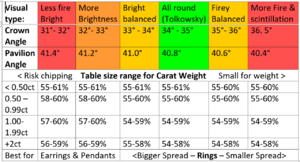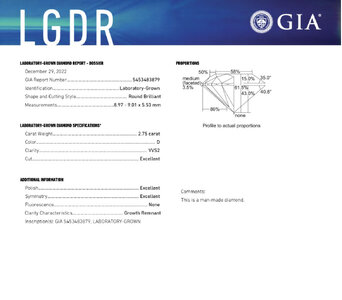All
As many of you know I was recently looking for a 3.5 to 4 carat diamond.
While researching one of the things I found was that a disproportionate number of diamonds in this size range had table > 58.
Eg when I recently looked at one of the sites, there were 5 diamonds when I capped table at 58 (and had bunch of other filters on proportions, color and carat). But the moment I increased table to 59, there were 13 diamonds. So it more than doubled the number of options.
This made me wonder what are the trade-offs associated with going to 59 table in this size range, assuming all other proportions were in the tight range (ie HCA < 2). Any inputs would be great.
As many of you know I was recently looking for a 3.5 to 4 carat diamond.
While researching one of the things I found was that a disproportionate number of diamonds in this size range had table > 58.
Eg when I recently looked at one of the sites, there were 5 diamonds when I capped table at 58 (and had bunch of other filters on proportions, color and carat). But the moment I increased table to 59, there were 13 diamonds. So it more than doubled the number of options.
This made me wonder what are the trade-offs associated with going to 59 table in this size range, assuming all other proportions were in the tight range (ie HCA < 2). Any inputs would be great.















300x240.png)